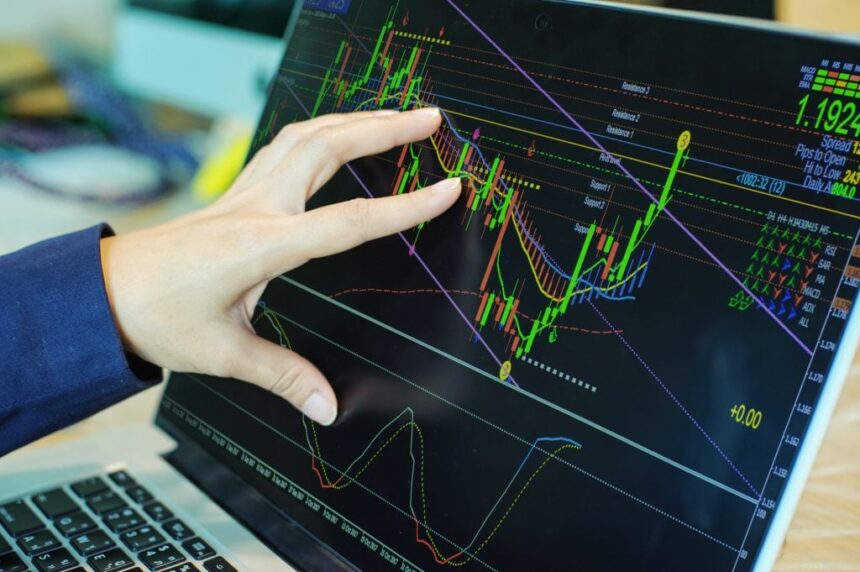These tools are designed to assist traders in making informed decisions, executing trades efficiently, and managing risks effectively. One of the most essential trading tools is the trading platform itself. Modern trading platforms provide comprehensive features, including real-time charts, news feeds, and analytical tools. They serve as the primary interface through which traders interact with the markets.
How to Use Trading Platforms Effectively
Effectively using trading platforms is fundamental for successful CFD trading in the UK. A trading platform is the hub for executing trades, analyzing market data, and managing trading accounts. To make the most of these platforms, traders must familiarize themselves with their features and functionalities.
Firstly, understanding the user interface is crucial. Trading platforms have various sections, including charts, order windows, and account summaries. Traders should explore these sections to know how to navigate the platform efficiently. Customizing the layout to suit individual preferences can also enhance the trading experience.
Another critical aspect is effectively utilizing charting tools. Charts are essential for technical analysis, providing visual representations of price movements over different time frames. Trading platforms offer a range of chart types, such as line charts, bar charts, and candlestick charts. Reading and interpreting these charts is vital for identifying trends and making informed trading decisions.
Trading platforms often provide access to historical data and performance analytics. Analyzing past trades and performance metrics can offer valuable insights into trading strategies and areas for improvement. By reviewing historical data and enhancing their performance, traders can refine their strategies.
The Role of Automated Trading Systems in CFD Trading
One key benefit of automated trading systems is their speed. These systems can analyze market data and execute trades faster than human traders. This speed is particularly advantageous in fast-moving markets where prices can change rapidly. Automated systems can capitalize on short-term opportunities that manual traders might miss.
Another vital benefit is consistency. Automated trading systems follow predefined rules and strategies, ensuring that trades are executed consistently. Adhering to a systematic approach can help automated systems achieve more reliable and predictable results.
Automated trading systems allow for backtesting. Backtesting involves running the trading algorithm on historical data to evaluate its performance. This process helps to identify potential weaknesses and optimize the algorithm before deploying it in live markets. By testing and refining strategies, traders can enhance the effectiveness of their automated systems.
Regular monitoring and adjustments ensure that automated systems align with current market trends and conditions. These benefits and considerations are particularly relevant for those involved in CFD trading in the UK, where leveraging advanced technologies can significantly improve trading performance and outcomes.
Enhancing Trading Performance with Technical Analysis Tools
Effectively utilizing technical analysis tools can significantly improve the accuracy and timing of trades.
Different moving averages exist, including simple moving averages (SMA) and exponential moving averages (EMA). Traders can identify possible buy and sell signals by analyzing the interactions between short-term and long-term moving averages.
Bollinger Bands is another popular technical analysis tool. They help identify periods of high and low market volatility.
Traders use these signals to anticipate potential price reversals.
Technical analysis also involves using chart patterns, such as head and shoulders, triangles, and double tops and bottoms. These patterns provide visual representations of market sentiment and can indicate potential trend reversals or continuations.
Utilizing Real-Time Data and Market Insights
Utilizing real-time data and market insights is essential for trading decisions and staying ahead of market trends. Access to up-to-date information allows traders to react to market developments and capitalize on opportunities. Various tools and resources are available to provide real-time data and market insights.
One primary source of real-time data is live market quotes. Trading platforms provide real-time price quotes for various financial instruments, including currencies, commodities, and indices. These quotes reflect the current market prices and allow traders to monitor price movements and execute trades at the best possible prices.
In addition to price quotes, real-time news feeds are invaluable for staying informed about market developments. Following the latest news, traders can anticipate market reactions and adjust their strategies accordingly.
Economic indicators and reports also play a crucial role in providing market insights. Data on employment, inflation, GDP growth, and other financial metrics offer valuable information about an economy’s health. Trading platforms often integrate economic calendars highlighting upcoming data releases and their potential market impact.
Leveraging advanced trading tools is essential for achieving better results in the competitive trading world. From understanding the functionalities of trading platforms to utilizing automated trading systems, technical analysis tools, and real-time data, these tools provide traders with the necessary resources to make decisions and execute trades efficiently. Incorporating these tools into a comprehensive trading strategy can enhance trading performance, manage risks effectively, and capitalize on market opportunities. By staying informed and continuously refining trading approaches, traders can navigate the dynamic markets and work toward achieving their financial goals.


